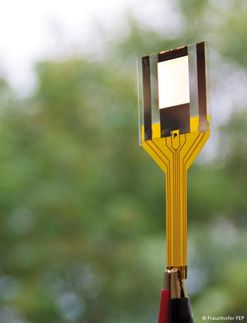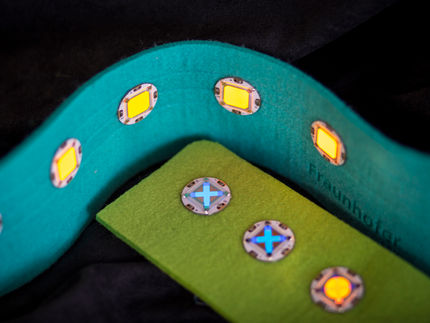New light shed on intensely studied material
The organic polymer PEDOT is probably one of the world's most intensely studied materials. Despite this, researchers at Linköping University have now demonstrated that the material functions in a completely different manner than previously believed. The result has huge significance in many fields of application.
More than 1,500 scientific articles are devoted each year to the conducting organic polymer PEDOT, making it probably one of the world's most intensely studied materials. This polymer has unique properties, and is highly suitable for use in solar cells, electrodes, light-emitting diodes, soft displays, bioelectronic components, and many other applications. However, most articles are experimental in nature, and only a tiny fraction - fewer than one in a thousand - of the articles provide a theoretical understanding of the various aspects of the polymer. The same is true for the electronic structure of PEDOT.
"The age of trial and error research should be over. I cannot imagine how it would be possible today to develop a new material without having a deep theoretical understanding of the underlying principles that determine its properties", says Igor Zozoulenko, professor and head of the theory and modelling group at the Laboratory of Organic Electronics, Linköping University, Campus Norrköping.
He is also the main author of an article that presents a new theory of electronic structure and optical properties of PEDOT that overturns a large part of the corresponding previous research into PEDOT.
The calculation model currently recognised as the most accurate for predicting the properties of materials is known as "DFT", an abbreviation of "density functional theory". The method calculates quantum mechanical electron densities in the most efficient way possible, and has become a standard within the various branches of materials science. For organic conducting polymers, however, models developed in the 1980s - before the DFT gained its widespread use - are still widely utilized. The work of the researchers at LiU has shown that these models are clearly erroneous.
"Many of the analyses that have been presented in scientific articles about PEDOT will have to be re-visited and revised", says Igor Zozoulenko.
One of the major differences concerns the optical absorption, or (somewhat simplified) the light-emitting properties, of the material. These are, of course, crucial for its use in solar cells, soft displays, and other applications. The optical spectrum - the colour of the light - depends on the electronic structure of the material, including such properties as the energy levels at which electrons are located inside the atom, the spins they possess, and the way in which they can move in the material. Since our understanding has been deficient, the interpretation of the experimental results has been wrong.
PEDOT, or poly(3,4-ethylenedioxythiophene), is also a material that can be doped to give it its remarkable conductivity. The colour changes as the degree of doping increases, or, in other words, as increasing amounts of a doping agent are added to break the pairing between electrons in the atoms. Previous methods have, quite simply, not been sufficiently exact.
"Our paper presents a completely different interpretation of the optical spectra from PEDOT, and a completely different interpretation of the electron parametric resonance spectrum, EPR. Our results can also be applied to many other conducting polymer materials", says Igor Zozoulenko.
Original publication
These products might interest you
See the theme worlds for related content
Topic World Spectroscopy
Investigation with spectroscopy gives us unique insights into the composition and structure of materials. From UV-Vis spectroscopy to infrared and Raman spectroscopy to fluorescence and atomic absorption spectroscopy, spectroscopy offers us a wide range of analytical techniques to precisely characterize substances. Immerse yourself in the fascinating world of spectroscopy!

Topic World Spectroscopy
Investigation with spectroscopy gives us unique insights into the composition and structure of materials. From UV-Vis spectroscopy to infrared and Raman spectroscopy to fluorescence and atomic absorption spectroscopy, spectroscopy offers us a wide range of analytical techniques to precisely characterize substances. Immerse yourself in the fascinating world of spectroscopy!






























































